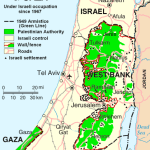When I write about pastoral life, I try to make it interesting and/or useful to readers who aren’t clergy. There is almost always a spiritual or practical truth that applies to a broader audience.
That said—if you are not a vocational minister, the following might literally bore you TO DEATH, and I don’t want to be responsible for that. Read on if you wish. But I won’t be offended if you go cruise another blog and come back here tomorrow (or the next day).
Meantime– I’m going to share some thoughts on the creative process behind mapping a sermon series. (If you didn’t fall asleep just reading that sentence, you MIGHT be interested in the rest of this).
First, here goes my confession: I hate the lectionary. I use it occasionally, between series or seasons. But when I do, it feels like I’m accepting a triple-dog-dare from the Holy Spirit. Like, close your eyes and throw a dart at the liturgical calendar, sucker, and see if you can say something meaningful about the verse you land on. I know preachers who do this every Sunday, and do it beautifully.
But I prefer to extend a conversation in a 3 to 6 week framework. Maybe it’s because I’m a compulsive reader. I love a good, long story; and I love, even more, a good long series that lets me invest in characters, a sense of place, and the evolution of relationships over time. It seems that preaching just flows more naturally if it’s part of an ongoing conversation. And if you know you have 4 weeks to talk about, say, “Forgiveness,” then you don’t feel the urgency to tell every story you know about forgiveness in a single 16 minute message. Spreading it out gives everyone (preacher included) room to breathe, time to process, and the imaginative capacity to expand on a theme.
Note: I say “I,” but I always crowd source. In each of these steps, I process with the other pastors on staff, with the worship team, with clergy friends…sometimes strangers on the street, I’m not even lying. So before you read on, my best advice is: find your people, and talk it out. (Especially if some of those people are going to be preaching some of the messages in the series.)
That said…here’s the road map. It’s not a perfect plan, but it’s a helpful pattern for me, and I hope it might be for others. Please excuse the janky formatting. Think of it as a choose-your-own-adventure story for clergy.
Step 1: Pick a theme.
I start with three basic questions. And then, based on the responses, I choose ONE of those three to develop into series. Here are examples of each:
Question 1. What is on the minds and hearts of your church folks, and what is happening in their lives? Are there trends?
Pulpit response: Address a life situation that many of your church people are dealing with, and help frame that reality in a meaningful way. (if you go this route, keep it broad. You don’t want to do a series on like, ‘marriage’ unless every single person in your church is married; or a series on ‘how to deal with a broken index finger’ unless everyone is sporting the same splint…you know).
Example 1: It’s August. Kids are going back to school. Also, many of our church folks are dealing with divorce, or the death of a loved one. Or having babies or sending kids off to college. Or living through career or financial uncertainty. So we’re doing a series about faith in transition.
Question 2. What’s happening in the life of the congregation? What challenges and opportunities are present? What is the ‘next big thing’ as we grow together?
Pulpit response: create a narrative for this season in the life of the church, and use the message to shape congregational identity and mission.
Example 2: our street is just opening back up after a LONG messy construction project that made for a church access nightmare. People can find us again! People can see our signs from the road again! But… are we still ‘closed off’ in other ways? Enter September series, when we’ll talk about how mission has to be rooted in a sense of place and context…which is really hard to do in the suburbs. How can we be present in the ways Jesus asks us to be when we live scattered all over a big ol’ metro sprawl area? Where is our place? Who are our neighbors?
Question 3. What is happening in the world right now? What do we find ourselves always talking about when we get together?
Pulpit response: help discern and articulate what it means to live faithfully in our time and place, in light of _______ (local or global issue of your choice: white privilege, climate change, growing inequity between rich and poor…etc)
Example 3: Many of us are thinking about justice issues around immigration. So this year, we’re going to approach Advent from the perspective of the refugee. Because really, most biblical characters (especially in the Christmas story) were running from something…
Once you’ve got a topic, you move on to:
Step 2: Name it. You want something that has a poetic ring to it, but is also descriptive and marketable.
Example 1: “Doors and Windows: Faces of Faith in Transition.”
Example 2: “Where in the World Are You?”
Example 3: “Songs of Refuge”
We’re going for topical, concise, and rhythmic. Subtitles or short blurbs (see step 5, marketing) help with the descriptive. At the very least, you want to leave people wanting to know more… And then you can
Step 3: Choose scriptures. At this point, you may be saying “but that’s eisegesis!” (Hey, don’t holler at me.) Picking a topic and THEN finding the scripture to support it might seem like slippery theological territory. But I call it: knowing what is going on in your church and world; and drawing out the part of the biblical narrative most meaningful and relevant to that context. If we want to help folks view the world through the lens of the gospel, sometimes we have to start with the world…where it is, what it’s moving through. And then we do the work of study, prayer, and discernment to help us stay faithful to the text, rather than using it to support our own ideas.
Even with a topic in mind, it can be hard to narrow down to a month’s worth of text passages. Here are some ideas for different approaches…
–Example 1: For the “Doors and Windows” series, we selected an assortment of biblical characters who are shaped our led through transition; or who learn something about God during a season of uncertainty. I always try and do a range of OT/Gospel and Epistle texts for a series, but this time, it broke down like this:
Week 1, Joshua Crosses the Jordan
Week 2, Elijah in the Wilderness
Week 3, Ruth and Naomi, Moving On
Week 4, The Disciples Leave Their Nets
For a variation on this theme… OT, Wisdom, Gospel, Epistle; mirror the lectionary in a 4 week series. Through the language of your chosen series topic.
Week 1—An Old Testament text (especially from Genesis or Exodus) can point to God’s faithfulness, God’s providence and purpose, and how the modern day person/community of faith has a small part in a much larger narrative of God’s movement throughout history.
Week 2—A wisdom or poetic text is a great place to talk about spiritual disciplines; and/or places where we witness the holy in every day life around us.
Week 3—Jesus! If Jesus is not the every week centerpiece, then he should be the climax of a series. I usually choose gospel texts for the middle and/or final weeks. The Jesus stories are the place to emphasize the life of discipleship; faithful response to local and global concerns; and the hopeful, life-giving properties of the gospel for our time and place.
Week 4—More Jesus. Maybe framed through an epistle this time. What is the good word for the church in our time and place? What is the challenge? How do we screw up the same things that those early disciples screwed up, and how does that pattern shed some light on our future with God and each other?
–Example 2 –The ‘Pick a Book’ approach
I’ve done this before, with varying results. I’m not entirely committed to doing it this time, but for the “Where in the World Are You?” series, I’m thinking of working through the book of Acts.
In this approach, you study the whole book, and draw out some basic truths from the work as a whole. Then use the passages that best articulate those finer points. For instance, Acts pretty much boils down to this:
-Church is not the destination; it’s the starting point
-WHERE you do ministry matters; church does not exist in a vacuum
-Church is not a place to go; it’s something to be
-It’s important for Disciples to gather together; but just as important that they disperse with the message.
-Everybody’s gifts matter. And showing up matters.
These are good narrative starting points to have in mind as you read through the text as a whole. When you do, the weekly passages will just sort of rise to the top and settle naturally.
– Example 3– The “Keep Hammering” approach.
This is the scariest prospect of all, but can also be the funnest… You preach the same text EVERY SUNDAY for a MONTH. Or rather, you start with the same text. And then you feature another one, from another part of the Bible,that illuminates the same theme.
I once used this approach for a series on spiritual gifts. Every Sunday for 6 weeks, I started with the I Corinthians passage about the ‘manifestations of the Spirit.’ Prophecy, wisdom, healing, miracles, tongues, etc. Each week, I focused on one of the individual gifts; highlighting a biblical character who demonstrated that gift. For prophecy, we had Anna and Simeon in the temple; wisdom was David; miracles = Moses, etc.
I’m going this same route for Advent this year. When the angel comes to Mary, she sings about the mighty being brought down, and the hungry being filled with good things…we call it The Magnificat. It is the ultimate hymn of justice, and the original Christmas carol. What if we sang a variation of that every Sunday during Advent, as we prepare for Jesus’ birth? And each week would also follow with a text about a person (or people) who are displaced, wandering, and seeking refuge. I’m thinking:
-Week 1: Isaiah or Jeremiah
-Week 2: Mary
-Week 3: Joseph
-Week 4: Jesus
-Epiphany—Wise Men
Which pretty much looks like every Advent, ever. But, framed through the ‘Songs of Refuge’ theme, it takes on some new life; and tells the stories of our past in the context of a modern-day humanitarian crisis. Maybe we feel called to move a little. Maybe we love our neighbors a little better. Maybe there’s less shopping… Here’s to hope.
When I get to this point, I’m always kind of exhausted, but there’s more. Cause now you have to
Step 4: Talk to the Musicians
So that they can be thinking about thematic songs; and
Talk to the worship elves (whomever they be in your church) so they can work their magic with the space and the liturgy and all that good jive. And THEN, you still have to:
Step 5: Market
And hope like hell that you’ve got somebody on staff who’s awesome at finding artsy images, developing graphics, and doing all the cool stuff with font, text placement, media, posters and mailings, so that people will actually show up to hear you preach.
Because after all this, what’s left is to
Step 6: Show up and bring some good news.
Because week to week, in any season, people are waiting to hear it.
They maybe even read all the way to the bottom of this really long, kind of tedious post, because they want to see what’s coming. And for that, I’m thankful.
It’s an art, not a science. There are real and actual ‘preaching processes and practices’ out there; more scholarly, more official, and maybe more effective. But I’m a reader. And for my money, a novel often has more good news than a text book. This is how the gospel comes to life for me. I hope it is also good news for somebody else.
















